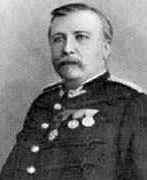Person: Delannoy, Henri Auguste

Henri Delannoy was a French mathematician who worked on probability and recreational mathematics. He was also intersted inthe history of mathematics.
Mathematical Profile (Excerpt):
- On his birth certificate his name appears as 'Henry' but in later life he had it officially changed to 'Henri' so in this biography we use the version of the name by which Delannoy himself wanted to be known.
- Omère Delannoy had fought in a number of Napoleon's military campaigns, in particular at the Battle of Waterloo, before becoming an administrator in the military.
- Henri was brought up in Guéret where he attended the Collège de Guéret.
- Delannoy saw action in 1859 in the Second Italian War of Independence.
- Delannoy was with this French army and took part in the decisive Battle of Solferino on 24 June which proved to be a tactical victory for the French-Piedmontese forces but at a high cost in terms of soldiers lost and wounded.
- We have not mentioned any mathematical activity by Delannoy, except as part of his schooling, up to this point and this is actually an accurate picture of his involvement in mathematics.
- However, Delannoy decided that he wanted to retire from the army and pursue his interests in mathematics and also his interests as a historian.
- The first paper by Delannoy, mentioned above, literally means 'Using a chessboard to solve arithmetical problems' but it would be much more understandable if we translated 'échiquier' as 'array' for indeed this is what Delannoy uses.
- In this paper he introduces numbers which are now known as 'ballot numbers' or 'Delannoy-Segner numbers'.
- In Emploi de l'échiquier pour la résolution de divers problèmes de probalilités Ⓣ(Using the chessboard to solve various problems in probability) (1889), Delannoy uses his lattice paths in arrays to solve seven problems already studied by mathematicians such as Ampère, Bertrand, Huygens, Laplace and Rouché.
- In this paper Delannoy introduces the 'Delannoy numbers' which count the lattice paths from the origin to (m,n)(m, n)(m,n) where the path from each point can go up, right, or across the (right-up) diagonal.
- It is interesting to note that in the 1950s a mysterious connection was spotted between these diagonal Delannoy numbers and Legendre polynomials.
- Other papers by Delannoy are: Problèmes divers concernant le jeu Ⓣ(Various problems on games) (1890), Formules relatives aux coefficients du binôme Ⓣ(Formulas on binomial coefficients) (1890), Sur le nombre d'isomères possibles dans une molécule carbonnée Ⓣ(On the number of possible isomers of a carbonaceous molecule) (1894), Sur les arbres géométriques et leur emploi dans la théorie des combinaisons chimiques Ⓣ(On the geometrical trees and their use in chemical combination theory) (1894), Sur une question de probabilités traitée par d'Alembert Ⓣ(On a question of probabilities treated by d'Alembert) (1895), Emploi de l'échiquier pour la résolution de certains problèmes de probabilités Ⓣ(Using the chessboard to solve various problems in probability) (1895), and Sur la probabilité des événements composés Ⓣ(On the probability of compound events) (1898).
- We mentioned above that, in addition to his mathematical interests, Delannoy was an active historian, indeed he published numerous articles in the Mémoires de la Société des Sciences Naturelles et archéologiques de la Creuse.
- Finally let us note another of Delannoy's interests - he painted watercolours.
Born 28 September 1833, Bourbonne-les-Bains, Haute-Marne, France. Died 5 February 1915, Guéret, La Creuse, France.
View full biography at MacTutor
Thank you to the contributors under CC BY-SA 4.0! 

- Github:
-

- non-Github:
- @J-J-O'Connor
- @E-F-Robertson
References
Adapted from other CC BY-SA 4.0 Sources:
- O’Connor, John J; Robertson, Edmund F: MacTutor History of Mathematics Archive
